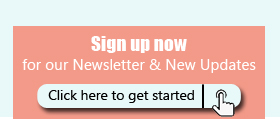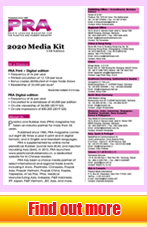Recycled Materials: Ocean plastics may buoy Europe rPET market
By Matt Tudball, Senior Editor, Recycling, ICIS
It certainly appears as though the recycled polymer markets in Europe are developing at a much faster pace than their virgin counterparts. There is an ever-growing interest in the growth of these markets, from the likes of brands and FMCGs, virgin polymer producers, the global petrochemical players and financial institutions.
EU legislation and the global war on plastic waste is leading to a massive amount of public and government attention being put on recycled plastics.
Major global brands are making pledges to increase the amount of rPET (recycled PET) in their PET beverage bottles. This is to either meet or exceed the EU’s 25% target by 2025, largely driven by consumer pressure, or perhaps as a marketing ploy.
ICIS data shows Europe does not produce anywhere near enough rPET to meet that 25% target. So buyers are going to have to source from elsewhere. One option maybe ocean-bound plastic.
Bantam Materials, a REACH-registered, UK-based materials supplier that has been in the rPET business for over a decade, is one of those companies bringing oceanbound plastic into Europe from Indonesia under the name of Prevented Ocean Plastic (POP), and is working with social enterprise OceanCycle to provide fully traceable POP material to European customers.
Traceability and certification
The aim of Bantam’s POP programme is twofold. First, to support local communities in at-risk areas where plastic will end up in the oceans. This can be done by incentivising communities to collect, sort and process plastic waste into high-quality recycled material. Second, to present consumers with the option to purchase products packaged in recycled material that has been proven to come from at-risk regions of the world.
Certification and traceability are the key factors that determine what defines POP compared to waste plastics collected inland. And it is the process of tracing and certifying the product that gives Bantam’s POP its slightly higher price position. However, the material Bantam is bringing into Europe is still priced within the normal free delivered (FD) northwest Europe (NWE) price range, albeit towards the top of that range.
“If the POP programme was priced one and a half or twice the price of the market and people were buying small amounts as symbolic gestures, local communities would not be supported with consistent collection and infrastructure would not be able to develop and grow for proper recycling," said Bantam Director Raffi Schieir. Price will always be an issue for an rPET buyer, regardless of the quality or the social benefit. As virgin PET prices have dropped through 2020, squeezing recyclers’ margins, so has the amount of rPET being used across Europe, with significant substitution away from rPET and back to virgin PET taking place over the last few months.
In essence, the purchaser of POP is paying for the benefit of saying it sourced its material from an at-risk area. In doing so, it has prevented that material from entering the ocean – a message that should resonate with consumers.
However, it is the converters who are hurt by weak margins and pressure from brands that want them to supply recycled content at the lowest possible price.
Despite the financially challenging situation recyclers find themselves in at present, POP obviously is resonating with some. Discount food chain Lidl introduced POP into its fish packaging in the UK in March.
Quality and volumes
Currently, Bantam brings around 1,000 tonnes/month of POP into the European market. And in a recent webinar on ocean plastic, OceanCycle’s Ryan Schoenike said total monthly volumes could be close to 3,000 tonnes by the end of the year (although he did not specify if this was just volumes for rPET). European food-grade material capacity for rPET in 2018 was just over 300,000 tonnes according to ICIS.
Schieir has faced challenges in getting European buyers to accept that material from outside of Europe is of good enough quality to meet their needs,. But as 2025 creeps closer, and alternatives like chemical recycling are still likely a decade away, buyers are going to need to prop up their current volumes from somewhere.
In countries like Indonesia, which rely solely on bottled water to provide clean drinking water to their citizens, it allows companies like Bantam to ensure its post-consumer bottles (PCB) have the highest PET content – in Bantam’s case its PCB in Indonesia contain 99% PET.
Meeting Europe’s rPET needs?
With the coronavirus pandemic still at the forefront of both the industry’s and consumer’s minds, together with weak PET bottle demand translating into weak rPET demand and no sign of a pick-up in virgin PET prices anytime soon, ocean-bound plastic will have to shout extra loud to make its voice and benefits heard in the European market.
Ocean-bound plastic volumes may be small and by no means sufficient to fill Europe’s R-PET supply gap, but it could offer an attractive addition to a buyer’s portfolio as a source of good quality recycled material, with the added benefit of preventing more plastic waste entering the ocean. And if the price levels can be maintained at a competitive level with those of European suppliers, what’s not to like about that?
(PRA)
Subscribe to Get the Latest Updates from PRA Please click here
©2020 Plastics and Rubber Asia. All rights reserved.

©2020 Plastics and Rubber Asia. All rights reserved.
Home Terms & Conditions Privacy Policy Webmail Site Map About Us





















